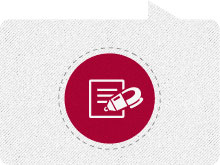
How to give users best user experience (UX) on your website
Dec 1
2018
- By admin

When a user search for a website according to his need he/she may come across numerous sites to go through which will show up in the search engine result. When he chooses one or two of the websites that he/she thinks is good and relevant to his search, he would scroll through them. Now the return or the time user spends on this website is directly proportional to the experience he is having while browsing through your website.
If user feels at ease and is able to find what he/she was searching for then this will help you in retaining the user, as the user will come back to your site whenever he/she will require searching something related to your niche. Opposite can also happen if the user is not comfortable with the site, you will be having a bounce back, where the potential customer will now reach out to some other business or website offering same solution.
What is User Experience?
User Experience is also termed as User Experience Design (UXD or UX). It is a process in web design where you increase the end users satisfaction. This can be achieved by looking into the usability of the website, Approach ability of the website and monitoring how proficiently user can interact with website.
It is important to increase and enhance the experience of the user to retain the valuable future customers, which you can do with a good SEO management which can be handle by a digital agency with expertise in the matter. If once they had good experience they are more likely to come back to your website. It can be achieved following some practices diligently like by analysing the flow of content. See that user is tempted to keep scrolling and many more which we will discuss now below.
Some tips to help you give best User Experience (UX)
Most of the websites when developed are done by keeping in mind that they should be appealing to the end user and should be able to give good experience to the user, but still sometimes there are chances when it is overlooked or businesses have failed to go through with the usability and experience of the website.
Let’s look at some points which will help you to improve your websites overall performance and increase UX.
1. First step is to make user stay on your website. If a user click on your website link and it takes time to load the page, there is higher probability that the user will bounce back from your website before even it is fully loaded. Speed of website loading matters a lot. A general analysis showed that your website shouldn’t be taking more than 2 second to load. Slow loading page is a frustration to the user and they would go to your competitor’s site. To improve your website load time you must check all the images and optimise them.
2. Consistency has to be maintained on your website. To increase the usability of your website each page of your website should follow similar layout, font and colours. This will make user feel familiar with the site and will make them comfortable. This will present a great organised image and branding of yours.
3. Website should be multi-platform friendly. As we know most of the browsing that happens on internet is through smartphones. Smartphones are the most used device that user uses to go online. So it becomes a necessity for your website to be mobile friendly. It is not an option but a requirement of time, if you want your website to succeed. Also the sites which are not mobile friendly end up having their online rankings effected and in turn lose traffic and revenue generated. The point that you must keep in mind is that theme on your website and on mobile device should be same so that customers feel a sense of familiarity and connection to your site. Though the design will be different but you can still manage to give a feeling of familiarity by images used, Font, Colour can be made similar.
4. Layout of your design should be simple and common. People or users are familiar with a general type of layout and commonly used phrases for links. Any difference if made may not be welcomed by the user, and they may think about going to a familiar site. Use tried and tested layout which will increase your sites usability.
5. Heading and subheadings play a vital role in your website content. It makes your page look better, show better readability to the user. Heading helps you with your ranking in SEO. Avoid too much heavy text together, distribute it into subheadings and use bullets to highlight the pointers. This will make user stick to your webpage.
6. Images play an important role in your website. The kind of image that goes with your content is best to use. Use only optimised image as if not optimised they may result in making your website go slow, which is not good for your site.
7. Content of your website is the main factor which will tell whether the user will stick to your site or not. If your content is highly researched and detailed it will attract the user. You have to keep in mind to use easy and understandable language so that it appeals to a large group of people. The key is to explain the information in the simplest way possible so that user can get the result he/ she were looking for.
These pointers will help you in increasing the experience of the user on your website. If your business is a versatile one and you are able to hook on some customers, they will surely come back to your website for further business or information gathering. This is how you will be able to gather up a large amount of users and increase your traffic and revenue in return.
If your website is under-performing contact Receptional today to see how we can improve the usability of your website and its overall performance.





Comments
Leave a comment